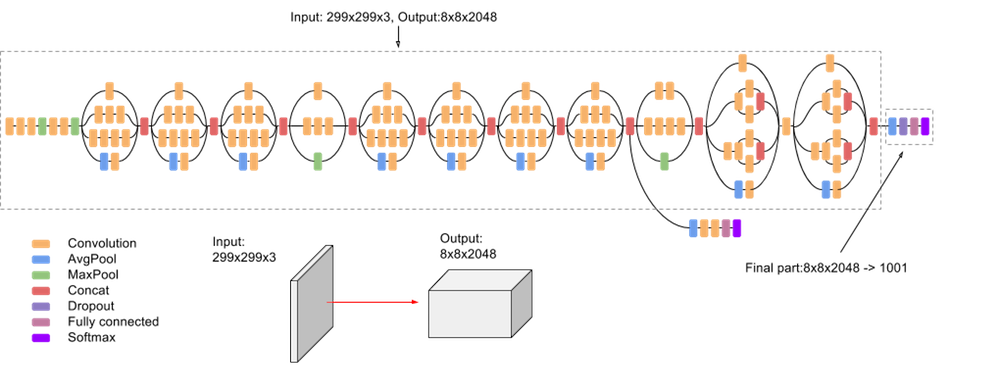What are adversarial examples?

@tiffanysouterre


Developer Relations
@Microsoft
Tiffany Souterre
WTM Ambassador
@WTM




(Ian J. Goodfellow, et al. 2016)

(Christian Szegedy, et al. 2016)



(Kurakin A., et al. 2017)



(Mahmood Sharif, 2016)

(Anish Athalye, et al. 2018)
28 px
28 px

0.00
1.00
0.38
784 neurons
Input layer
0
1
2
3
4
5
7
8
9
6
Output layer
Hidden layers
784 neurons
Input layer
Hidden layers

28 px
28 px

784 neurons
Input layer
0
1
2
3
4
5
7
8
9
6
Output layer
Hidden layers




1 input layer
1 output layer
1 input layer
1 hidden layer
1 output layer
1 input layer
4 hidden layers
1 output layer



https://karpathy.github.io/2014/09/02/what-i-learned-from-competing-against-a-convnet-on-imagenet/

Inception-v3 Architecture
Trained for the ImageNet database (1000 classes)
Input : 299 x 299 x 3
import numpy as np
from keras.preprocessing import image
from keras.applications import inception_v3
img = image.load_img("katoun.png", target_size=(299, 299))
input_image = image.img_to_array(img)

img.show()
input_image /= 255.
input_image -= 0.5
input_image *= 2.
input_image = np.expand_dims(input_image, axis=0)model = inception_v3.InceptionV3()
predictions = model.predict(input_image)
predicted_classes = inception_v3.decode_predictions(predictions, top=1)
imagenet_id, name, confidence = predicted_classes[0][0]
print("This is a {} with {:.4}% confidence!".format(name, confidence * 100))| 0 | 1 | ... | 297 | 298 |
| 1 | ||||
| ⋮ | ||||
| 297 | ||||
| 298 |
| 0 | 1 | ... | 297 | 298 |
| 1 | ||||
| ⋮ | ||||
| 297 | ||||
| 298 |
| 0 | 1 | ... | 297 | 298 |
| 1 | ||||
| ⋮ | ||||
| 297 | ||||
| 298 |
This is a tabby with 86.86% confidence!
Inception V3
import numpy as np
from keras.preprocessing import image
from keras.applications import inception_v3
from keras import backend as K
from PIL import Image
model = inception_v3.InceptionV3()
model_input_layer = model.layers[0].input
model_output_layer = model.layers[-1].output
confidence_function = model_output_layer[0, object_type_to_fake]
gradient_function = K.gradients(confidence_function, model_input_layer)[0]
grab_confidence_and_gradients_from_model = K.function([model_input_layer, K.learning_phase()], [confidence_function, gradient_function])
spoon_confidence = 0
while spoon_confidence < 0.98:
spoon_confidence, gradients = grab_confidence_and_gradients_from_model([hacked_image, 0])
hacked_image += gradients * learning_rate
hacked_image = np.clip(hacked_image, original_image - 0.1, original_image + 0.1)
hacked_image = np.clip(hacked_image, -1.0, 1.0)
img = Image.fromarray(img.astype(np.uint8))
img.save("hacked-image.png")
Inception V3
spoon
0.00
tabby
0.87




This is a tabby with 86.86% confidence!
This is a spoon with 98.65% confidence!
This is a pineapple with 98.93% confidence!



Original white image
Hacked white image
Hacked white image saturated
Discriminator
Real
Fake
0

1
Real
Database
Generator

Fake
Generative Adversary Networks GAN

(Goodfellow 2016)

Model based optimization
4.5 years of GAN progress on face generation. https://t.co/kiQkuYULMC https://t.co/S4aBsU536b https://t.co/8di6K6BxVC https://t.co/UEFhewds2M https://t.co/s6hKQz9gLz pic.twitter.com/F9Dkcfrq8l
— Ian Goodfellow (@goodfellow_ian) January 15, 2019






















(Egor Zakharov, et al. 2019)
(Egor Zakharov, et al. 2019)
Thank you!
@tiffanysouterre


(Papernot, et al. 2016)

(Ian J. Goodfellow, 2016)